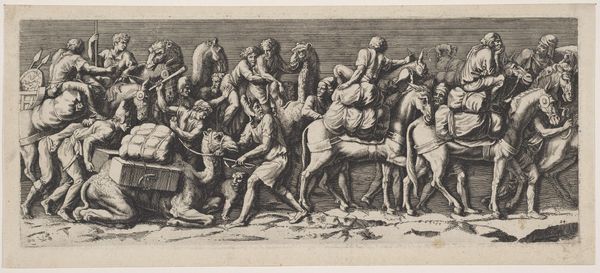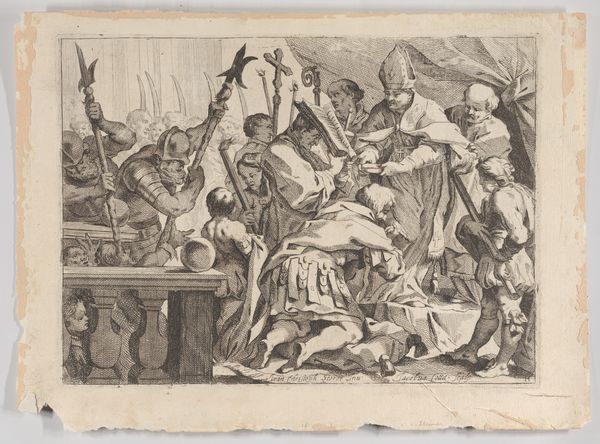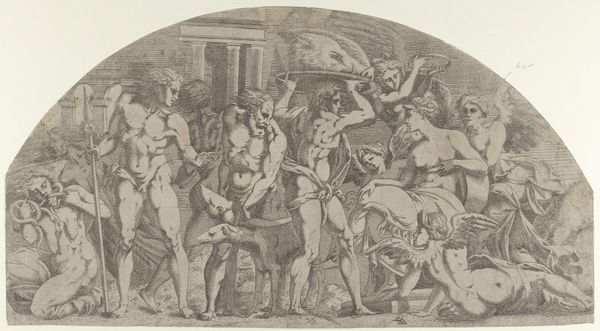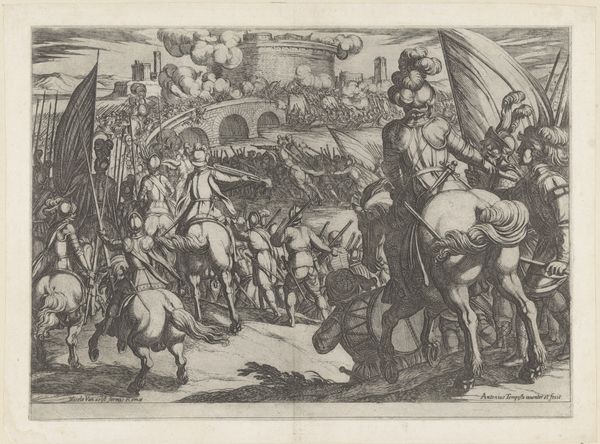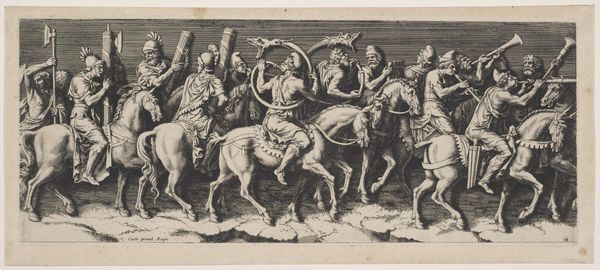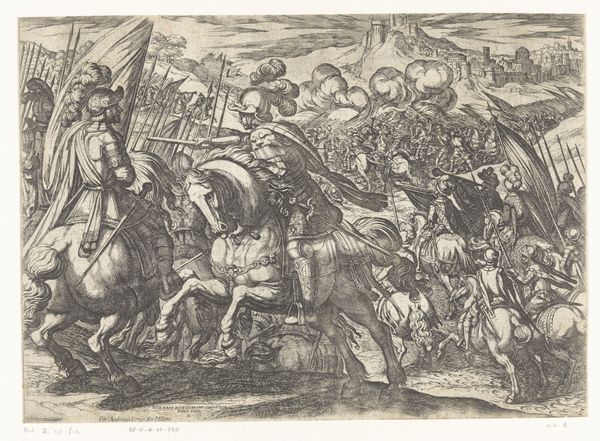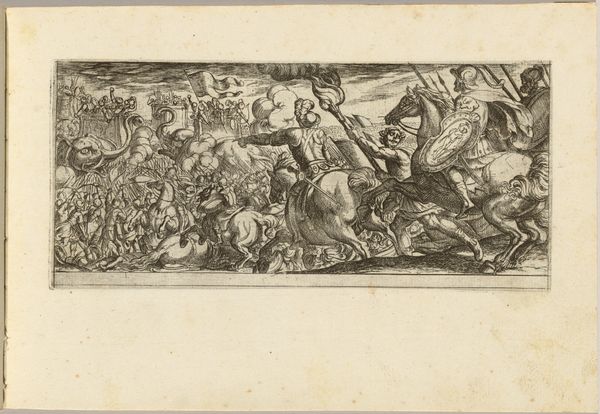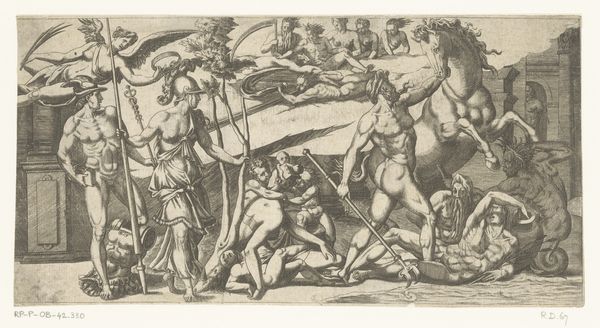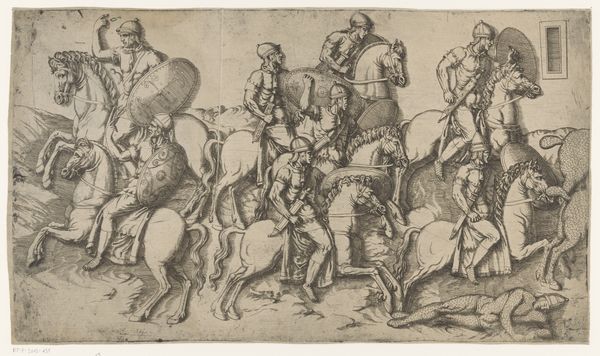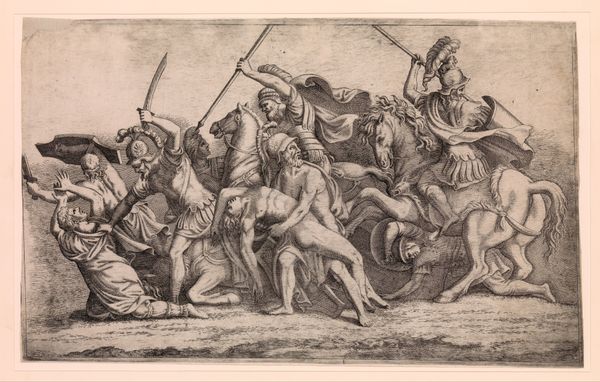
A Roman Army on the March - Troop Convoy 1540 - 1545
0:00
0:00
drawing, print, engraving
#
portrait
#
drawing
# print
#
landscape
#
figuration
#
soldier
#
horse
#
history-painting
#
italian-renaissance
#
engraving
Dimensions: Mount: 13 1/8 in. × 18 1/8 in. (33.3 × 46 cm) Sheet (trimmed): 11 7/16 × 17 3/8 in. (29 × 44.1 cm)
Copyright: Public Domain
Editor: This is "A Roman Army on the March – Troop Convoy" created between 1540 and 1545 by Antonio Fantuzzi, currently housed at the Metropolitan Museum of Art. It's an engraving, isn't it? There’s something frantic about the composition. What do you see in this print? Curator: I'm drawn to how the printmaking process itself mirrors the mechanics of war it depicts. Think about it: an engraving involves repetitive, almost industrial labor. Fantuzzi uses this medium, traditionally seen as reproductive rather than purely creative, to circulate an image of Roman power – power fundamentally built on labor and logistics. Editor: So, you're saying the medium isn’t just a way to depict the army, but part of the message about how the army functions? Curator: Precisely. And consider the materials: metal plates, ink, paper – all commodities circulating in the 16th century. The print becomes a sort of material document of early capitalist expansion, subtly mirroring the expansionist aims of the army depicted. Notice how the artist foregrounds the labor invested in production –the repetitive strokes. Where do you see this artistic labor displayed? Editor: Well, the repetition is certainly in the soldiers themselves, but also in the many strokes which give tonal value to the bodies and horses... it's work! Does that then change how we view high art, shifting focus to the materials and effort put into it? Curator: Exactly. It disrupts the clean division between high art and mere craft. Fantuzzi's print encourages us to consider art as a product of social and material forces. By showing us that repetition, a labor and craft like element of creation. Editor: That gives me a completely new way to see the artwork; seeing the process, material and manpower within the work itself and how it represents early capitalism in a very material way. Curator: Absolutely. Examining art through the lens of its production helps us understand its role in a broader historical and economic context.
Comments
No comments
Be the first to comment and join the conversation on the ultimate creative platform.



